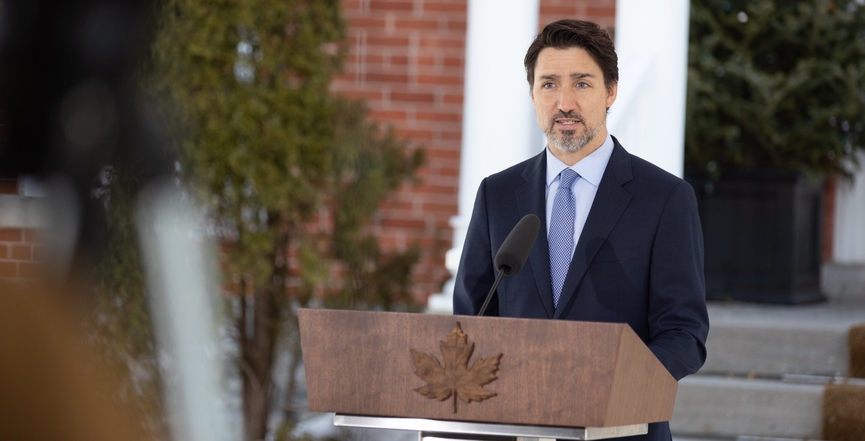The Liberal brand is in ascension. With the world facing a pandemic, Justin Trudeau, who has faced seven years of Conservatives unleashing personal attacks beginning with “just not a leader” TV ads, is now looking like … a leader. The prime minister leads the Canadian response to COVID-19, while his wife battles the virus, and he and his family are self-isolated.
Maddeningly, the emergency measures announced March 19 by the Liberals in response to the economic distress caused by the virus fall well short of what is needed.
Employment insurance replacement income of no more than 55 per cent of earnings is not going to help $12-an-hour workers stave off destitution when they lose their jobs.
Despite creating an Emergency Care Benefit and an Emergency Support Benefit — temporary sickness pay, to be followed by temporary income support — as Doreen Nicoll documents, the Liberal government is failing to get money circulating right away to people laid off and without the means to pay rent or buy food.
In his CCPA report “The Rent is Due Soon,” Ricardo Tranjan reveals that of the 3.4 million renters in Ontario, 46 per cent have total savings that amount to less than one month’s income.
Without paid sick leave, or adequate income support, sick workers are forced to continue on the job because they have no other way of making ends meet.
When each individual infected with the virus infects two people or more, the virus spreads rapidly. In response, countries like France and Spain have locked down their economies — and ordered people to stay home — to reduce the number of infected people bringing the virus into contact with others.
To make confinement at home possible, comprehensive income-support policies need to be in place, and supplanted with emergency assistance.
France has agreed to pay 80 per cent of employee wages for temporarily laid-off workers.
Denmark has a program paying 75 per cent of salaries for affected employees, and guaranteeing bank loans for companies.
Jagmeet Singh wants the Liberal government to increase the measly 10 per cent emergency wage subsidy promised to small business to above 75 per cent of an employee’s salary.
The 13 per cent of GDP Denmark has earmarked to maintain incomes and employment will relieve the worst effects of the economic crash. Germany and Australia have announced rescue packages equal to 10 per cent of their GDP.
The Canadian spending response — $27 billion for workers in need — amounts to a woefully inadequate one per cent of GDP.
As Andrew Jackson perceptively commented, Canada has to deal with “the crisis before the crisis.” This includes an employment insurance program that has been defrauding workers for decades by obliging them to pay into the program, then cutting and denying benefits.
The destruction of EI and welfare by successive federal governments forced people to work for next to nothing. Short hours, poor working conditions and no social benefits meant the expansion of precarious work, creating gaping inequalities in Canada.
The Liberal emergency package is slated to start only in April, not March when it is needed. It is to be run by the CRA, which has a poorly functioning website, and a super slow 1(800) service (think Air Canada speed and proficiency).
Service Canada received 929,000 EI requests this past week; it is not noted for speed in accepting claims.
The biggest share of the Liberals’ $82-billion economic response is $50 billion reserved to support insured mortgage pools, which assemble mortgages underwritten by banks for home mortgages. In short, the Liberals have authorized Canada Mortgage and Housing Corporation (CMHC) to inject cash into the banking and financial system in return for buying assets in danger of being dumped by skittish bond holders.
In fact, this $50 billion is not government spending, and should not be counted as such in the COVID-19 emergency aid. It is an asset swap: government deposits for mortgage bonds.
Separately, the Bank of Canada is putting $500 million a week into the mortgage bond market.
All recognize the need to keep the banking system solvent — but this should not be confused with putting money into the hands of the needy.
A group of five economists from two universities have called for the immediate adoption of a targeted minimum revenue of $1,000 per month to be sent to individuals aged 18-64 with yearly incomes below $50,000.
The initial payout is estimated at $11.6 billion a month or $139.2 billion yearly. At about five per cent of GDP, it is doable and certainly within the range of spending by countries of comparable standing in the world to deal with the pandemic.
Duncan Cameron is president emeritus of rabble.ca and writes a weekly column on politics and current affairs.
Image: Justin Trudeau/Twitter



